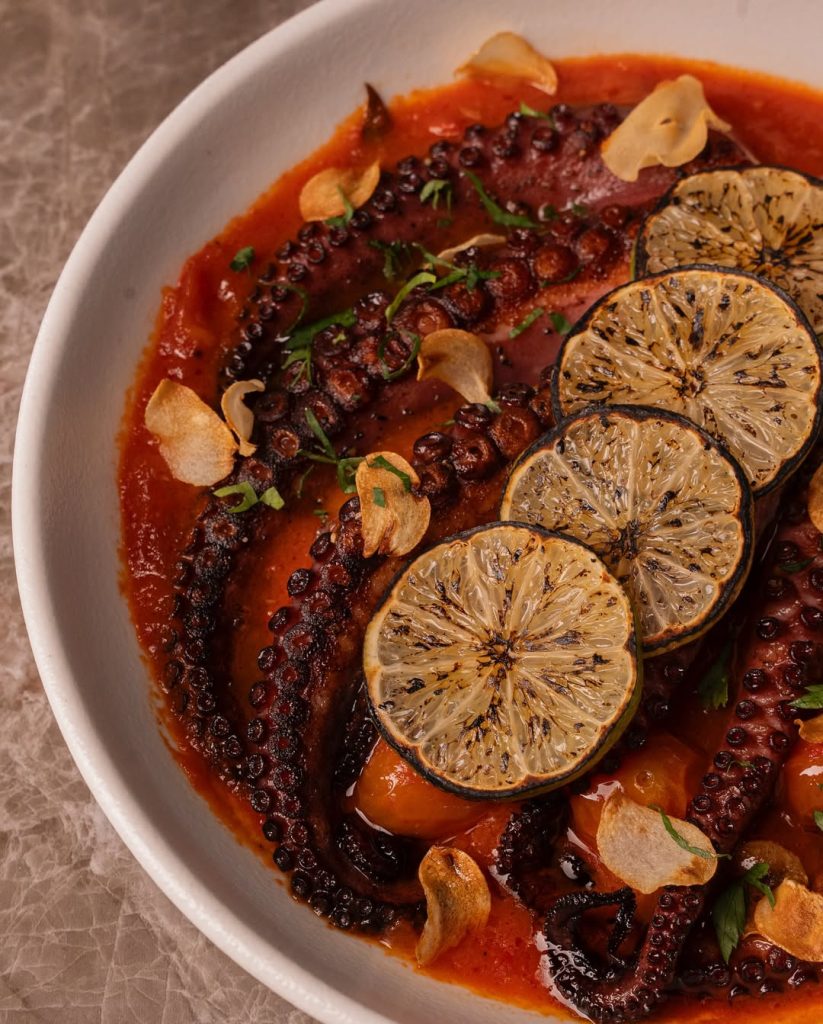You know those dishes that sound like something only a coastal restaurant in southern Italy could pull off? This is one of them—but here’s the twist: it’s actually incredibly simple to make at home.
Octopus often gets a bad rap for being tricky or intimidating to cook, but when simmered slowly in red wine, tomatoes, and aromatics, it becomes meltingly tender and packed with flavor. This Mediterranean-style stew brings bold, rustic richness with very little effort. Even if you’ve never cooked octopus before, this one-pot wonder will have you feeling like a seasoned seafood chef by the time dinner’s served.
Whether you’re trying to impress dinner guests or treat yourself to something special, this octopus stew delivers elegance, depth, and heartwarming comfort—with minimal fuss. Let’s dive in.
Why This Dish Works

Octopus has a mild, slightly sweet flavor that acts as a perfect canvas for bold ingredients like red wine, garlic, and tomato. Simmering it low and slow breaks down its firm texture, resulting in meat that’s tender and succulent—not rubbery.
This dish combines the warmth of a classic tomato stew with the richness of a wine reduction, creating a sauce that’s as addictive as it is aromatic. And because it all comes together in one pot, the cleanup is just as easy as the cooking.
Ingredients
Here’s everything you’ll need to create this show-stopping stew (serves 4):
For the Stew:
- 1.5–2 pounds fresh or frozen octopus, cleaned and rinsed
- 3 tablespoons olive oil
- 1 large onion, finely chopped
- 3–4 garlic cloves, minced
- 1 fresh red chili (or ½ tsp chili flakes), finely sliced (optional for heat)
- 1 teaspoon sweet paprika
- 1 teaspoon dried oregano
- 2 tablespoons tomato paste
- 1 can (14 oz) diced tomatoes
- 1 ½ cups dry red wine (Cabernet Sauvignon or Shiraz work well)
- 1 bay leaf
- Salt and pepper, to taste
- Zest of 1 lemon
- Fresh parsley, chopped, for garnish
To Serve:
- Crusty bread, polenta, or rice
- Lemon wedges (optional, for extra zing)
Step-by-Step Instructions
1. Prep the Octopus
If you’re using frozen octopus, thaw it fully in the fridge overnight. Rinse under cold water to remove any residual slime. You can cut the octopus into large chunks before cooking or leave whole—cooking will shrink it.
Pro tip: If you want extra tenderness, blanch the octopus in boiling water for 1 minute before using it in the stew.
2. Sauté the Aromatics
Heat the olive oil in a large Dutch oven or heavy-based pot over medium heat. Add the chopped onion and sauté until soft and translucent, about 5–6 minutes. Stir in the garlic and chili (if using) and cook for another minute until fragrant.
3. Build the Base
Add the tomato paste and paprika to the pot. Stir well and let it cook for 2 minutes to caramelize and deepen in flavor. Then pour in the red wine and stir, scraping up any bits stuck to the bottom of the pan.
4. Add Tomatoes and Herbs
Add the diced tomatoes, oregano, bay leaf, and a pinch of salt and pepper. Stir everything together, then gently nestle the octopus pieces into the stew.
5. Simmer Low and Slow
Bring the mixture to a gentle boil, then reduce heat to low, cover, and let it simmer for 1½ to 2 hours. Stir occasionally and check for tenderness. The octopus should be easily pierced with a knife and almost melt in your mouth.
If the sauce reduces too quickly, you can add a splash of water or stock during cooking.
6. Finish with Zest and Fresh Herbs
Once the octopus is tender and the sauce has thickened beautifully, remove the bay leaf and stir in the lemon zest for brightness. Adjust seasoning to taste.
Serving Suggestions
This stew is best enjoyed with something to soak up the sauce. Try:
- Thick slices of grilled sourdough or ciabatta
- Creamy polenta
- Steamed rice or herbed couscous
- A simple green salad with vinaigrette to balance the richness
For a full Mediterranean-style meal, serve with marinated olives, a glass of bold red wine, and a lemony dessert like panna cotta or lemon sorbet.
Tips for Success
- Don’t fear frozen octopus – it’s often more tender than fresh and widely available.
- Red wine matters – use one you’d actually drink for the best flavor.
- Let it rest – Like most stews, this tastes even better the next day as the flavors meld.
Leave a comment